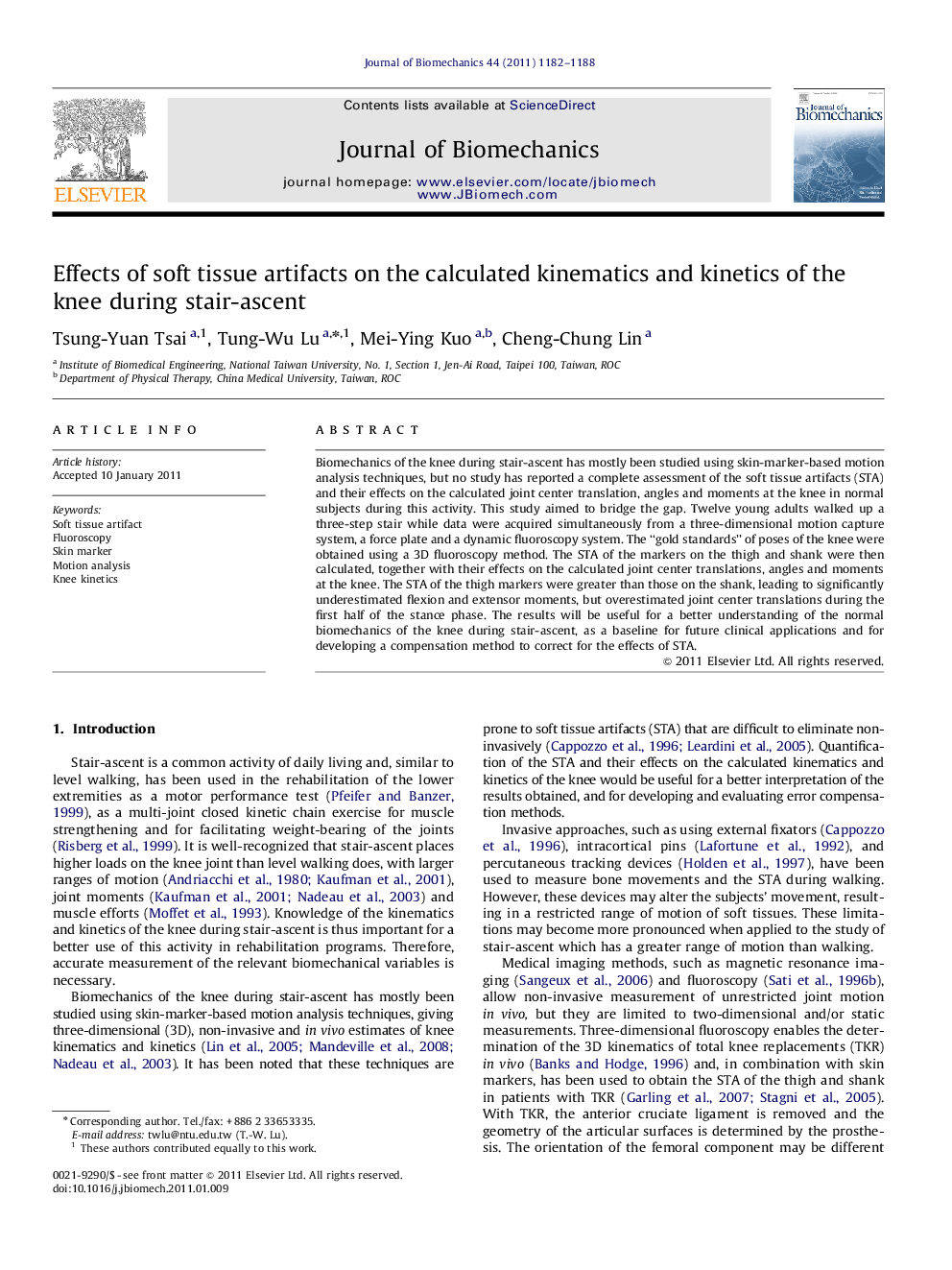| Article ID | Journal | Published Year | Pages | File Type |
|---|---|---|---|---|
| 10433386 | Journal of Biomechanics | 2011 | 7 Pages |
Abstract
Biomechanics of the knee during stair-ascent has mostly been studied using skin-marker-based motion analysis techniques, but no study has reported a complete assessment of the soft tissue artifacts (STA) and their effects on the calculated joint center translation, angles and moments at the knee in normal subjects during this activity. This study aimed to bridge the gap. Twelve young adults walked up a three-step stair while data were acquired simultaneously from a three-dimensional motion capture system, a force plate and a dynamic fluoroscopy system. The “gold standards” of poses of the knee were obtained using a 3D fluoroscopy method. The STA of the markers on the thigh and shank were then calculated, together with their effects on the calculated joint center translations, angles and moments at the knee. The STA of the thigh markers were greater than those on the shank, leading to significantly underestimated flexion and extensor moments, but overestimated joint center translations during the first half of the stance phase. The results will be useful for a better understanding of the normal biomechanics of the knee during stair-ascent, as a baseline for future clinical applications and for developing a compensation method to correct for the effects of STA.
Related Topics
Physical Sciences and Engineering
Engineering
Biomedical Engineering
Authors
Tsung-Yuan Tsai, Tung-Wu Lu, Mei-Ying Kuo, Cheng-Chung Lin,
